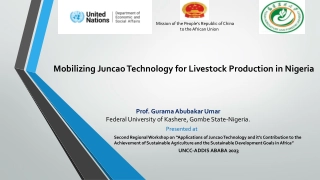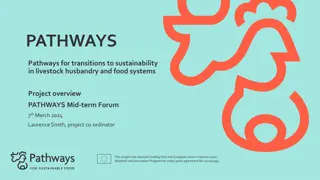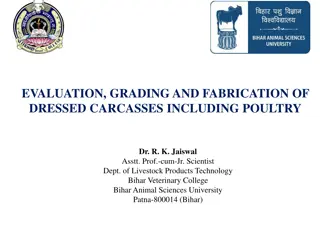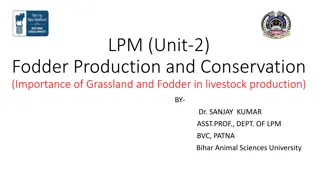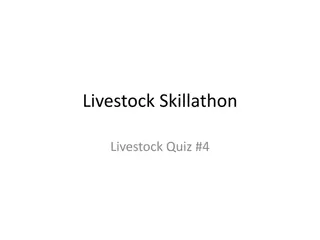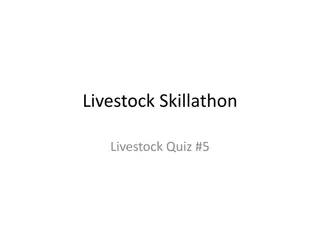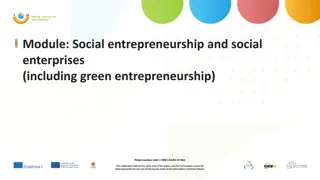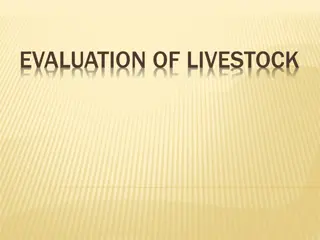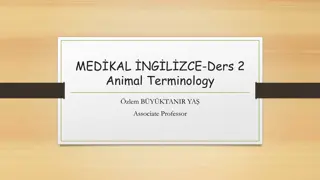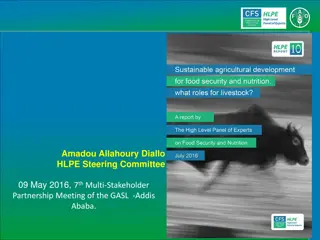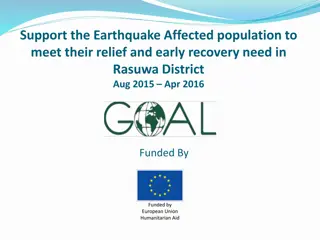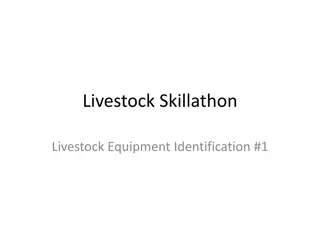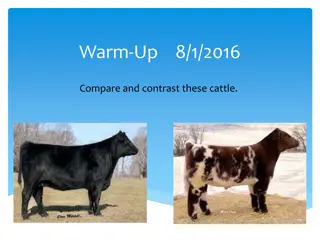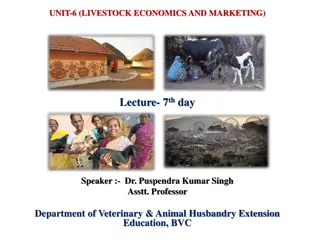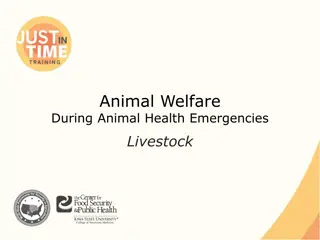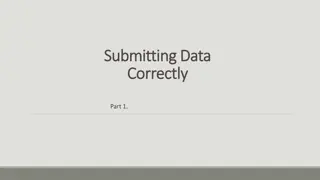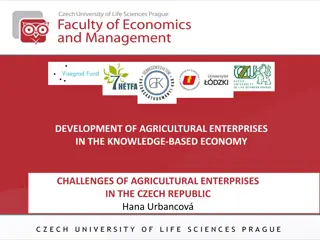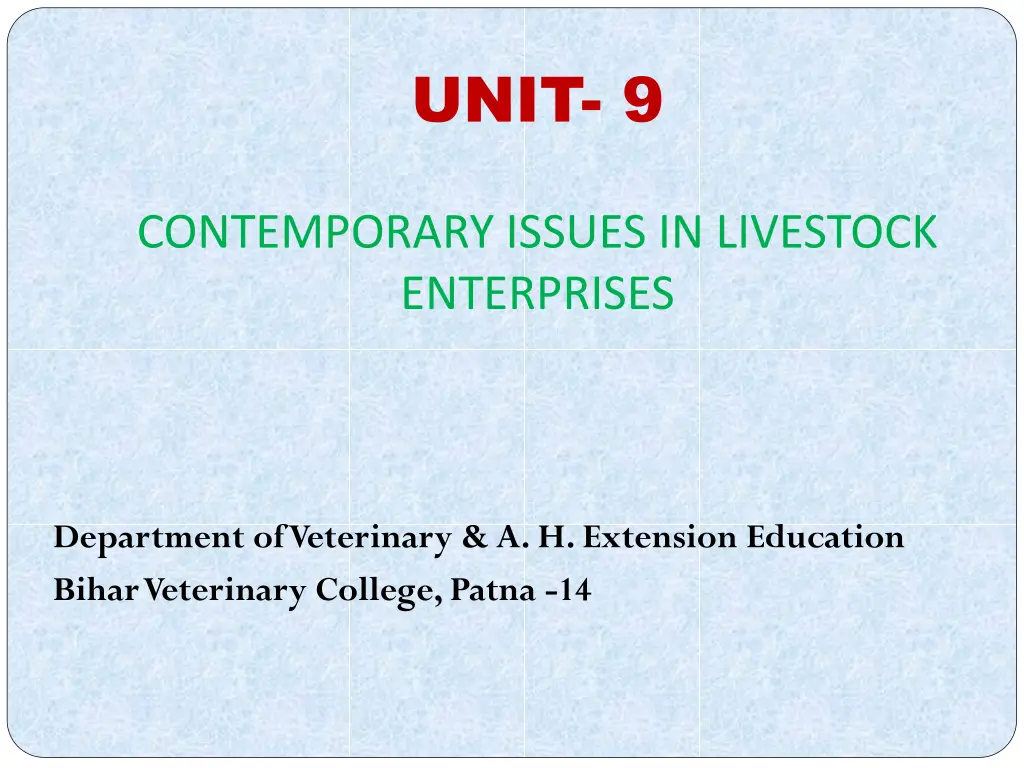
Empowering Rural Women in Livestock Enterprises: Gender Mainstreaming and Agricultural Development
Rural women play crucial roles in agriculture, contributing significantly to food production and security. Gender mainstreaming is essential for achieving equality and improving development agendas in livestock enterprises.
Download Presentation

Please find below an Image/Link to download the presentation.
The content on the website is provided AS IS for your information and personal use only. It may not be sold, licensed, or shared on other websites without obtaining consent from the author. If you encounter any issues during the download, it is possible that the publisher has removed the file from their server.
You are allowed to download the files provided on this website for personal or commercial use, subject to the condition that they are used lawfully. All files are the property of their respective owners.
The content on the website is provided AS IS for your information and personal use only. It may not be sold, licensed, or shared on other websites without obtaining consent from the author.
E N D
Presentation Transcript
UNIT- 9 CONTEMPORARY ISSUES IN LIVESTOCK ENTERPRISES Department of Veterinary & A. H. Extension Education Bihar Veterinary College, Patna -14
Lecture- 1 Gender mainstreaming and Gender sensitization
Both women and men play critical roles in agriculture throughout the world, producing, processing and providing the food we eat. Rural women in particular are responsible for half of the world s food production and produce between 60 and 80 percent of the food in most developing countries. Yet, despite their contribution to global food security, women farmers are frequently underestimated and overlooked in development strategies.
Rural women are the main producers of the worlds staple crops rice, wheat, maize which provide up to 120 percent of the rural poor s food intake. Women sow, weed, apply fertilizer and pesticides, harvest and thresh the crops. In the livestock sector, women feed and milk animals, while raising poultry and small animals such as sheep, goat, etc. Also, once the harvest is in, rural women provide most of the labour for post-harvest activities, taking responsibility for storage, handling, processing and marketing.
Gender Mainstreaming is a process rather than a goal. Efforts to integrate gender into existing institutions of the mainstream have little value for their own sake. We mainstream gender concerns to achieve gender equality and improve the relevance of development agendas. Such an approach shows that the costs of women s marginalization and gender inequalities are born by all.
Lecture- 2 Gender and Agricultural Development Gender and Agricultural Development
Gender and Agricultural Development Agriculture involves both self-employment and wage employment and accordingly requires precise information about who does what? In fact the land holding of 75% of farming community being small the number of landless labourers have swelled up over time by working on others farm. The situation thus demands an understanding of activity performance of men and women; and the children girls and boys, whose lives are fundamentally structured in different ways. Their living pattern, work pattern, interaction style and sharing of scientific information differ within the socioeconomic groups. Similarly, a gender-based division of labour is universal but culture and community diversities cause differentiation.
Gender Concepts Sex Identifies the biological differences between men and women, such as women can give birth, and men provide sperm. Sex roles are universal. Gender Bias The tendency to make decisions or take actions based on gender. Gender Mainstreaming Gender mainstreaming is the process of ensuring that women and men have equal access and control over resources, development benefits and decision- making, at all stages of the development process and projects, programmes and policy.
Gender-blind Gender blindness is the failure to recognise that gender is an essential determinant of social outcomes impacting on projects and policies. Gender Awareness Gender awareness is an understanding that there are socially determined differences between women & men based on learned behaviour, which affect their ability to access and control resources. This awareness needs to be applied through gender analysis into projects, programmes and policies. Gender-sensitivity Gender sensitivity encompasses the ability to acknowledge and highlight existing gender differences, issues and inequalities and incorporates these into strategies and actions.
Gender Discrimination Prejudicial treatment of an individual based on a gender stereotype (often referred to as sexism or sexual discrimination). Gender equality Gender equality is the result of the absence of discrimination on the basis of a person s sex in opportunities and the allocation of resources or benefits or in access to services Gender equity Gender equity entails the provision of fairness and justice in the distribution of benefits and responsibilities between women and men. The concept recognises that women and men have different needs and power and that these differences should be identified and addressed in a manner that rectifies the imbalances between the sexes.
Gender issues Specific consequences of the inequality of women and men. Gender Relations Ways in which a culture or society defines rights, responsibilities, and identities of men and women in relation to one another. Gender Sensitive Being aware of the differences between women s and men s needs, roles, responsibilities, and constraints.

